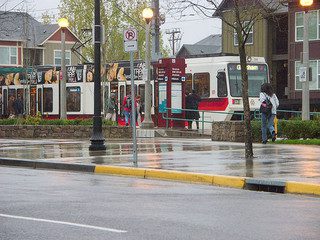
Secretary Anthony Foxx's new $302 billion dollar transportation proposal is creative and ambitious —it has a 70 percent increase for transit or $72 billion over 4 years. While 10.5 billion people ride transit every day, 45 percent of Americans have no transit access. This proposal would get transit to some communities that have been waiting for years. It will also help the environment (buses produce 80 percent less pollution than cars) and get seniors and young people to healthcare and jobs.
Sec. Foxx bolsters his argument for transit investment by using some sound economic reasoning: in Phoenix and Dallas transit investments have added more than $7 billion to each local economy.
The big picture is great, but the details get even better. With this proposal the administration finally responds to pleas from groups like the Transportation Equity Network (TEN), the Council of Minority Transportation Officials (COMTO), and the Amalgamated Transit Union (ATU), and suggests investing a big way in workforce development. Fifty percent of the transportation workforce will retire in the next 10 years—double our total national workforce. Taken with the fact that racism and sexism have kept the numbers of women and African Americans in the field shockingly low (3 percent and 6 percent, respectively) investment in creating a well trained, diverse transportation workforce only makes sense.
How does it work? State departments of transportation do a scan to determine their needs and then retool their already existing on-the-job training programs in conjunction with $245 million in new grant funds. It's a winning formula and it's one that TEN used when developing the Missouri model: increase both the demand and supply side. Pending retirements tweak the demand side and federal funds will help to increase the supply.
Other terrific innovations in the proposal include the expansion of workforce development across modes, the addition of local hire provisions in limited circumstances, and study of the use of Disadvantaged Business Enterprises (DBEs) in the rail program.
Groups like ATU, Policylink and Gamaliel have found much to praise in this proposal—hopefully Congress will try to do its job and take a serious look at its well-crafted recommendations.
(Photo by George Goodman CC BY-NC-ND)





Comments